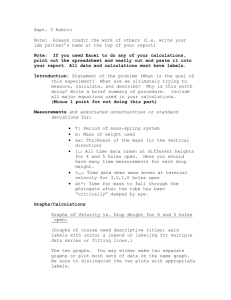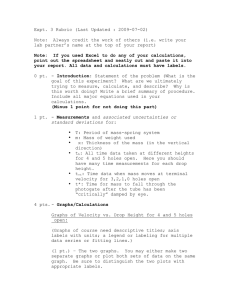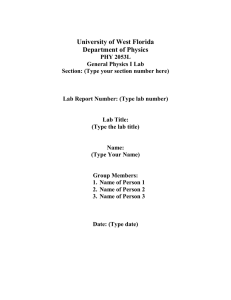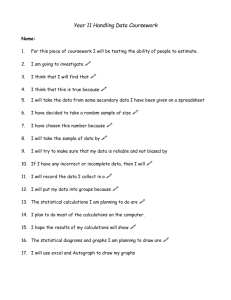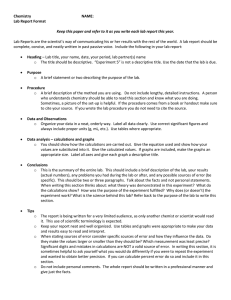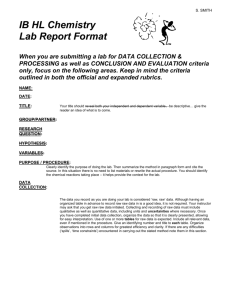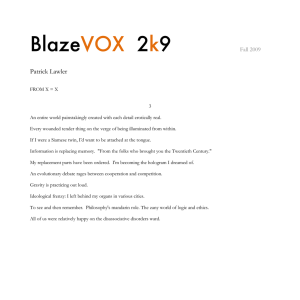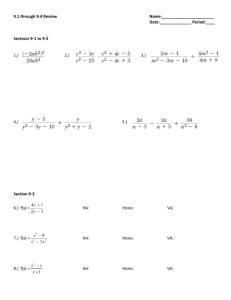Expt. 3 Rubric
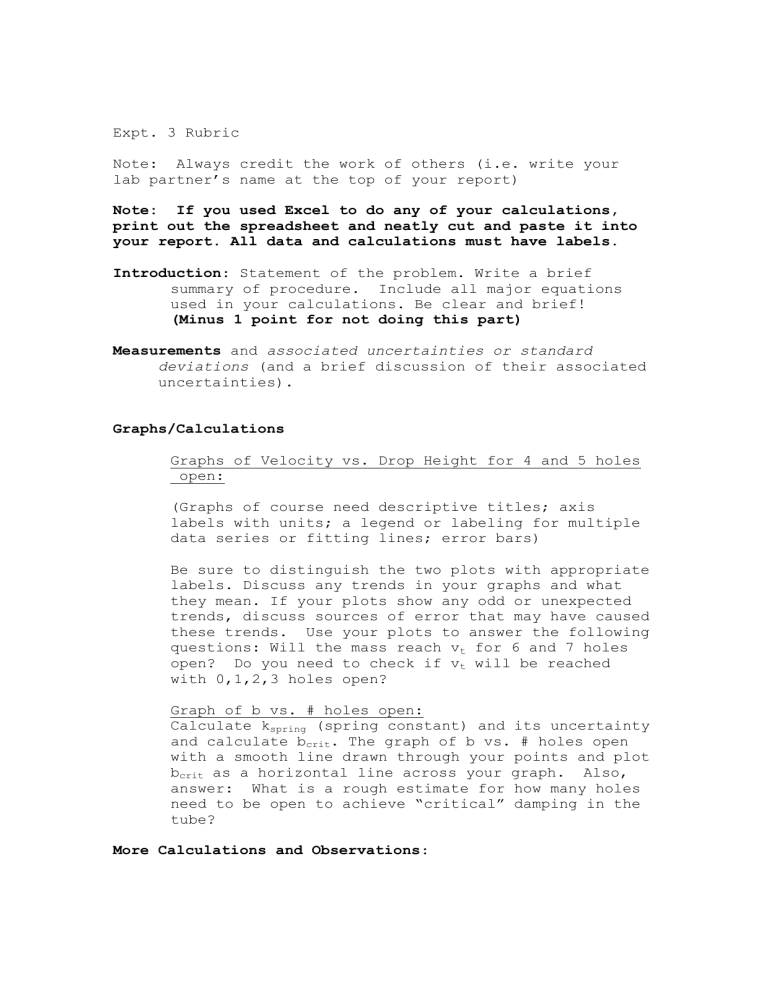
Expt. 3 Rubric
Note: Always credit the work of others (i.e. write your lab partner’s name at the top of your report)
Note: If you used Excel to do any of your calculations, print out the spreadsheet and neatly cut and paste it into your report. All data and calculations must have labels.
Introduction: Statement of the problem. Write a brief summary of procedure. Include all major equations used in your calculations. Be clear and brief!
(Minus 1 point for not doing this part)
Measurements and associated uncertainties or standard
deviations (and a brief discussion of their associated uncertainties).
Graphs/Calculations
Graphs of Velocity vs. Drop Height for 4 and 5 holes
open:
(Graphs of course need descriptive titles; axis labels with units; a legend or labeling for multiple data series or fitting lines; error bars)
Be sure to distinguish the two plots with appropriate labels. Discuss any trends in your graphs and what they mean. If your plots show any odd or unexpected trends, discuss sources of error that may have caused these trends. Use your plots to answer the following questions: Will the mass reach v t
for 6 and 7 holes open? Do you need to check if v t
will be reached with 0,1,2,3 holes open?
Graph of b vs. # holes open:
Calculate k spring
(spring constant) and its uncertainty and calculate b crit
. The graph of b vs. # holes open with a smooth line drawn through your points and plot b crit
as a horizontal line across your graph. Also, answer: What is a rough estimate for how many holes need to be open to achieve “critical” damping in the tube?
More Calculations and Observations:
An observation of the motion of the mass in the spring-mass-tube configuration after the tube has been “critically” damped according to b crit
(i.e. when the predicted number of holes is open). For this observation, sketch the motion you saw in a graph of y(vertical displacement) vs. t(time). Calculate k by-eye and its associated uncertainty (explain how you determined the spring was critically damped.) Compute an average value of the spring constant using the values obtained by the two separate methods.
Conclusion/Error Analysis: Comparison of k spring
and k by-eye
;
Calculate the discrepancy and its uncertainty, then use t-score to determine the level (a probability) at which these two values are discrepant. What does the value of this probability say about the acceptability/significance of the discrepancy between k spring
and k by-eye
? What do you conclude about the model used in this experiment? Discuss sources of error (systematic and random) and how did/could reduce them. For your discussion of random error, only mention the major sources of random error.
NOTE: “Human error” conveys no useful information.
NOTE: A very large fraction of this rubric is written analysis, both at the end and accompanying the graphs.
Neatness and clarity will be important if you want the TAs to find your thinking and give credit.
